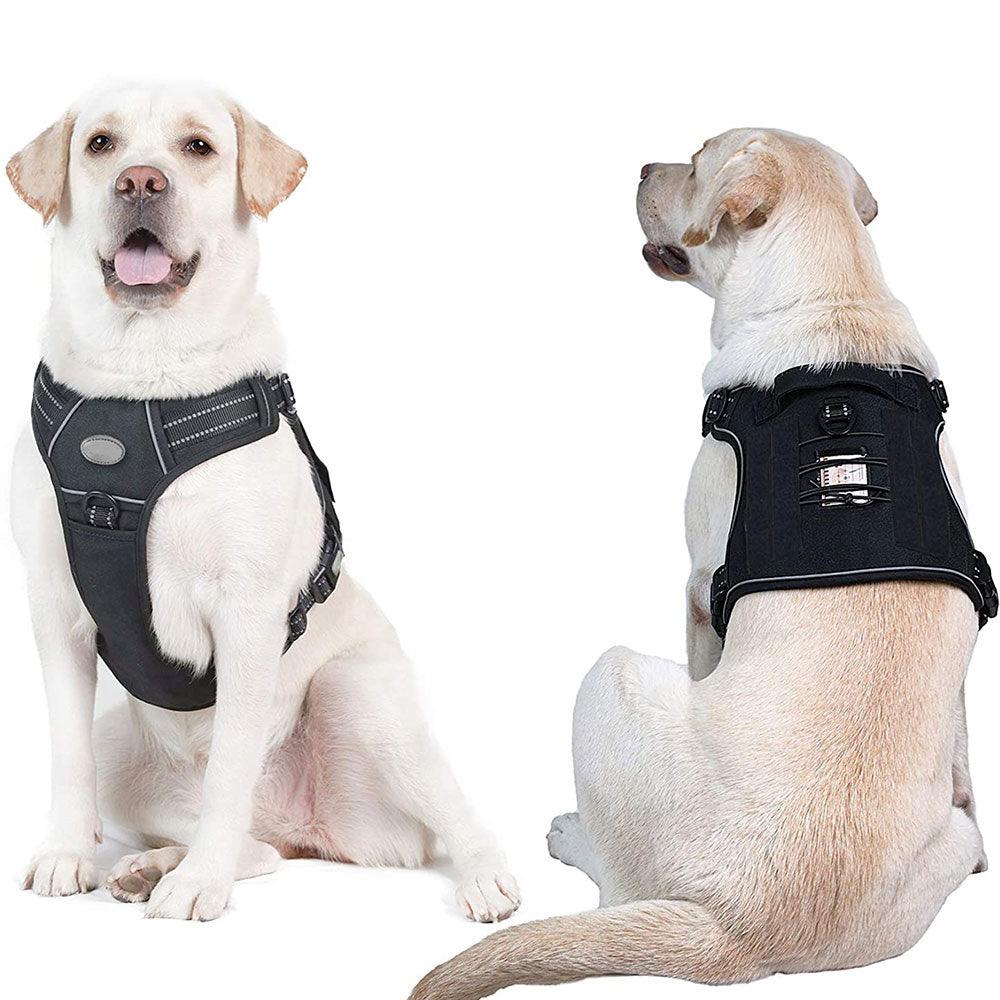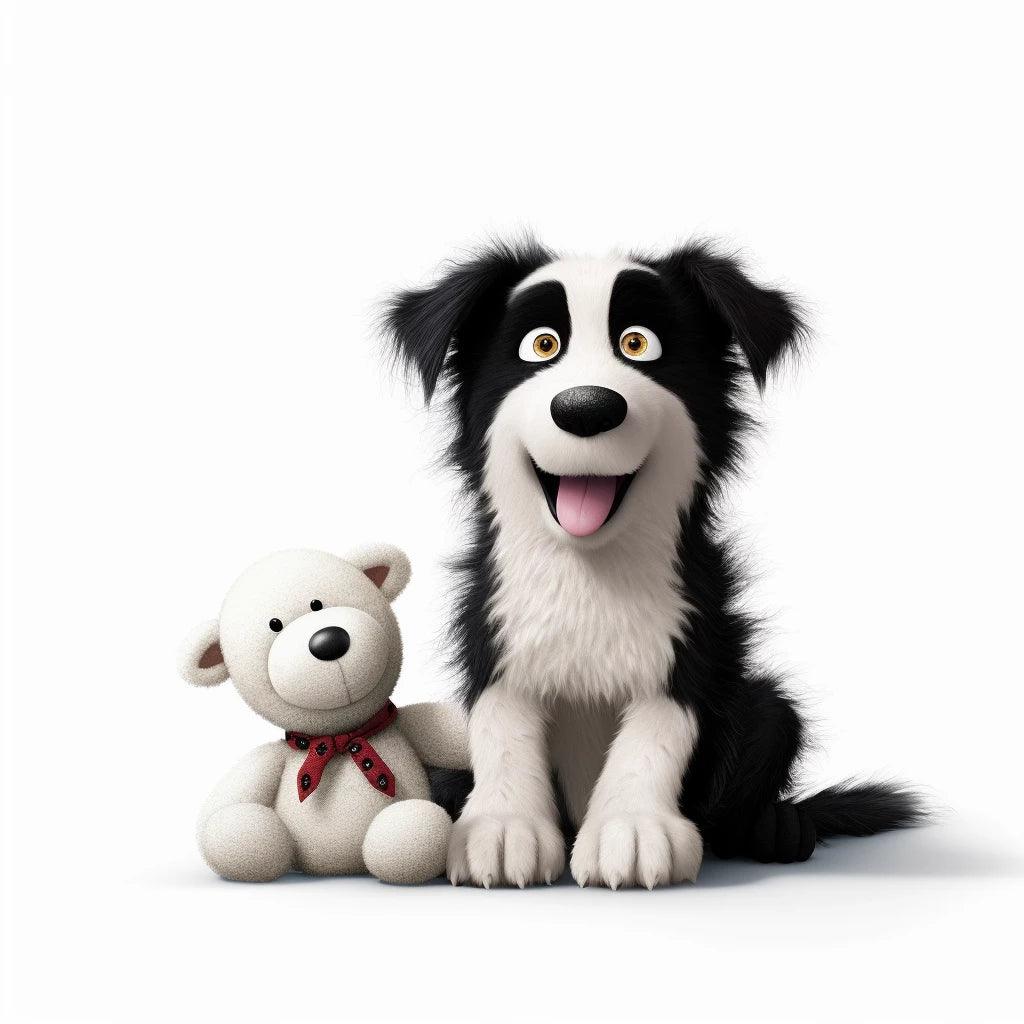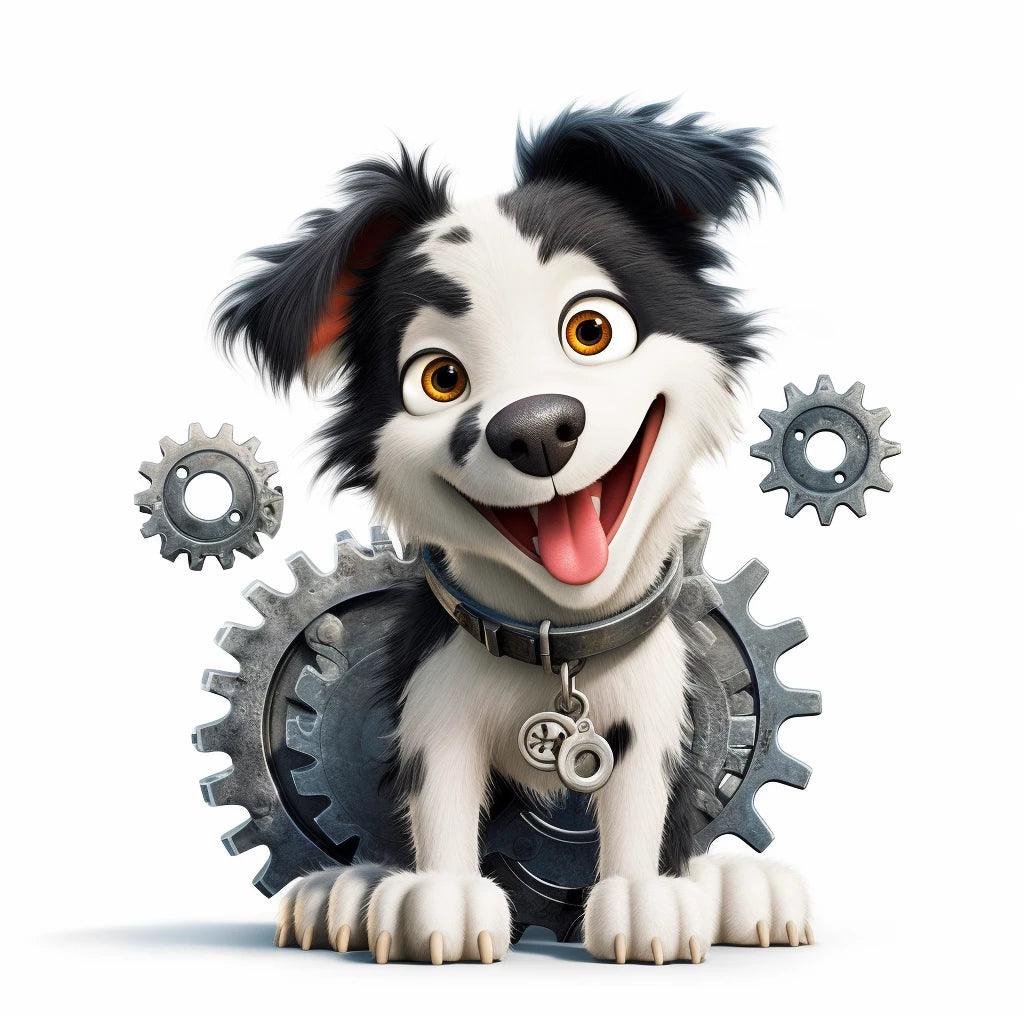
The Dog Harness Guide: Choice, Use and Advantages
Share
Welcome to Tao-K9.com, your reference for dog harnesses. Today we are going to discuss an essential subject for all dog owners: harnesses. Is it okay to put a harness on a puppy? What type of harness to choose? What is a no-pull harness? How to get a dog used to his harness? We'll answer all these questions and more in this comprehensive guide.
-
Why choose a harness for your dog?
Choosing between a harness and collar for your dog is an important decision that can have a significant impact on your pet's well-being. So why choose a harness for your dog?
First, a harness provides greater control over your dog, especially if you have a large dog or an energetic breed that tends to pull on the leash. With a harness, you have more control points, making it easier and safer to direct your dog on walks.
Additionally, a harness reduces the risk of injuries to your dog's neck and throat. Collars can put excessive pressure on your dog's windpipe and neck, especially if your dog pulls on the leash. This pressure can cause serious injury. In contrast, a harness distributes pressure more evenly across your dog's body, reducing the risk of injury.
A harness is also ideal for learning to walk on a leash. It allows you to guide your dog more gently and efficiently, making it easier to learn good leash manners. This is especially helpful for puppies and dogs who are still learning to walk properly on a leash.
Finally, a harness may be more comfortable for your dog. Harnesses are generally designed to fit comfortably around your dog's body, without rubbing or pinching. Many harnesses are also adjustable, meaning you can adjust them to fit your dog perfectly, ensuring optimal comfort.
A dog harness offers many benefits in terms of control, safety, learning to walk on a leash and comfort for your dog. At Tao-K9.com, we offer a wide range of high-quality dog harnesses to meet all your needs. Feel free to browse our selection and contact us if you have any questions.
-
Is it okay to put a harness on a puppy?
The question of whether it is appropriate to put a harness on a puppy is a common concern among many new dog owners. The answer is a resounding yes. In fact, introducing a harness to a puppy at a young age offers several significant benefits.
First, putting a harness on a puppy early on can help ease the leash training process. Puppies are naturally curious and energetic, and they can often resist or become distracted during the first attempts at leash walking. A harness provides superior control, which can make leash training easier and more effective.
Second, a harness can help protect a puppy's physical health. Puppies are still growing and their neck and windpipe may be sensitive. A collar, especially if pulled forcefully, can potentially cause damage. A harness, on the other hand, distributes pressure more evenly across the puppy's body, reducing the risk of injury.
Third, getting a puppy used to a harness early on can help prevent future problems. Some dogs may resist or feel uncomfortable wearing a harness if they are not used to wearing one from a young age. By starting early, you can help ensure that your dog will be comfortable wearing a harness in the future.
Finally, a harness can help strengthen the bond between you and your puppy. Leash training is an interactive activity that requires communication and cooperation between you and your puppy. By using a harness, you can guide your puppy in a gentler, more natural way, which can help strengthen your relationship.
It is not only acceptable, but also beneficial to put a harness on a puppy. At Tao-K9.com, we offer a variety of harnesses designed specifically for puppies that are both comfortable and safe. Don't hesitate to consult our selection to find the perfect harness for your new companion.
-
What type of harness to choose?
Choosing the type of harness for your dog depends on several factors, including your dog's size, breed, age, walking habits and activity level. There are several types of dog harnesses, each with their own benefits. Here are some of the most common types of harnesses and how to choose the best one for your dog.
has. Standard Harness: This type of harness is ideal for dogs who don't pull a lot on their leash. It is generally easy to put on and take off, and it provides good control over your dog. It is also comfortable for most dogs because it does not put pressure on the neck.
b. No-Pull Harness: If your dog tends to pull on his leash, a no-pull harness can be a great option. This type of harness is designed to deter dogs from pulling by distributing pressure across the dog's entire body rather than its neck. This makes pulling uncomfortable for the dog, which encourages him to walk at a more controlled pace.
vs. Support Harness: For older dogs or those with mobility issues, a support harness can be a great option. These harnesses are designed to help support the dog's weight, which can make walking and physical activity easier.
d. Sports Harness: If you and your dog are active and enjoy outdoor activities like hiking or jogging, a sports harness may be a good choice. These harnesses are generally more robust and designed to withstand heavy use.
When choosing a harness, it is also important to consider comfort and fit. A harness should fit well but not too tight; you should be able to fit two fingers between the harness and your dog's body. Additionally, make sure the harness is made of comfortable and durable material.
At Tao-K9.com, we offer a wide range of harnesses for dogs of all types, sizes and activity levels. We are here to help you choose the perfect harness for your dog. Feel free to browse our selection and contact us if you have any questions.
-
How to get a dog used to his harness?
Getting a dog used to his harness is an essential step in ensuring comfortable and safe walks. This may require some patience and persistence, but with the right techniques, your dog will quickly adapt to their new harness. Here are some tips to help you get your dog used to his harness.
has. Gradual introduction: When you first introduce the harness to your dog, let him sniff and explore the object. You can even place the harness near where your dog eats or sleeps so he associates it with positive things.
b. Positive association: Associate wearing the harness with positive experiences. For example, you can put the harness on your dog just before feeding or playing with him. This will help your dog associate the harness with things he likes, making the experience more enjoyable for him.
vs. Gradual training: Start by putting the harness on your dog for short periods at home. Reward him with treats and praise every time he wears the harness. Gradually increase the duration until your dog is comfortable with the harness.
d. Proper fit: Make sure the harness fits properly. A harness that is too tight can be uncomfortable and a harness that is too loose can allow your dog to escape. You should be able to fit two fingers between the harness and your dog's body.
e. Regular practice: Take regular walks with the harness. The more your dog wears the harness, the more he will get used to it. Start with short walks and gradually increase the duration and distance.
In conclusion, getting a dog used to a harness requires patience, consistency and a positive approach.
-
How to get a puppy used to a harness?
Getting a puppy used to a harness follows the same process as an adult dog, but it is important to do it in a fun and positive way. Make sure the harness is comfortable and fits properly, and reward your puppy with treats and praise each time he wears the harness.
Conclusion:
Whether you're a new dog owner or a veteran, choosing the right harness for your dog can make a big difference in your walking and training experience. At Tao-K9.com, we offer a wide range of high-quality dog harnesses to meet all your needs. Feel free to browse our selection and contact us if you have any questions.
Discover our harnesses:
https://tao-k9.com/collections/harnais-colliers-laisses
Dog Harness Guide FAQ
Q1: What are the main types of dog harnesses available?
A1: There are several types of dog harnesses, including the standard harness, the no-pull harness, the car harness, and the support harness. Each type has specific benefits and is designed to meet different needs and activities.
Q2: How do I correctly measure my dog for a harness?
A2: To measure your dog, use a soft tape measure. Measure the circumference of his torso at the widest point, just behind his front legs. Be sure to leave a two-finger space between the tape and the dog's body to ensure a comfortable fit.
Q3: Is a harness better than a collar for all dogs?
A3: Although harnesses provide better pressure distribution and reduce the risk of neck injury, the choice between a harness and a collar depends on the behavior, size, and specific needs of your dog. Harnesses are often recommended for dogs who pull or have breathing problems.
Q4: Can a harness be used for walking and running training?
A4: Yes, a harness can be a great tool for walking and running training, especially no-pull models that help control pulling dogs, making the exercise more enjoyable and safe for both parts.
Q5: Are the harnesses safe for prolonged use?
A5: Harnesses are safe for prolonged use as long as they fit properly and are designed for the type of activity intended. It is important to regularly check the fit and condition of the harness to avoid any friction or wear that could cause discomfort.
Q6: How do I get my dog used to wearing a harness?
A6: To get your dog used to wearing a harness, start with short sessions, rewarding your dog for wearing it. Gradually increase the time you wear the harness and associate it with positive activities, such as walks or games.
Q7: Can a harness help with a pulling dog?
A7: Yes, anti-pull harnesses are designed specifically to help control and reduce pulling behavior. They distribute the pulling force across the dog's body, making it less likely to pull and easier to control.
Q8: Are there special harnesses for dogs with medical conditions?
A8: Yes, there are support harnesses designed to help dogs with medical conditions such as arthritis, mobility issues, or after surgery. These harnesses provide additional support for ease of movement and comfort for the dog.
Q9: Where can you buy a quality dog harness?
A9: Quality harnesses can be purchased at pet supply stores, as well as on reputable e-commerce sites. Make sure you choose brands that are renowned for their durability and comfort.









